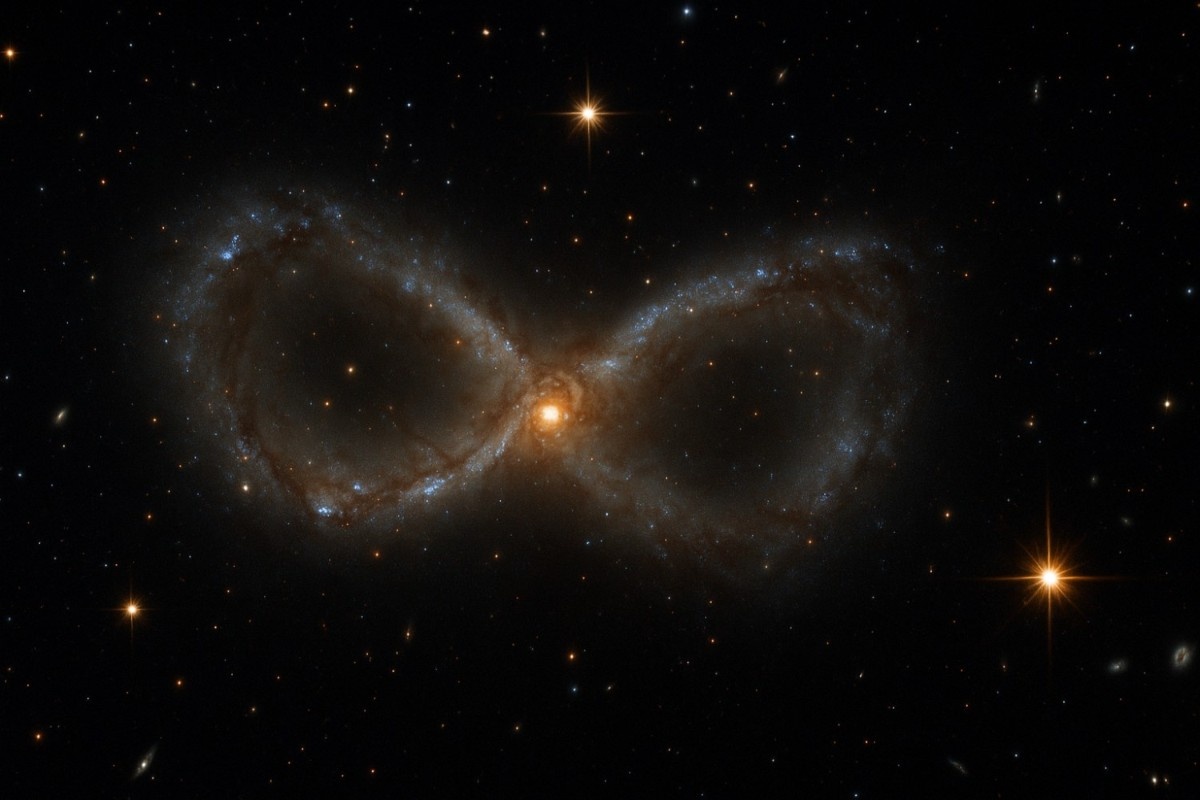In a discovery that has stunned the scientific community, astronomers using the James Webb Space Telescope (JWST) have, for the first time, observed the birth of a black hole. This groundbreaking event was captured in a galaxy 8.3 billion light-years away, now named the “Infinity Galaxy” due to its ∞-like structure.
What Makes This Discovery So Unique?
The Infinity Galaxy and Its Structure
The Infinity Galaxy appears to have formed from the collision of two separate galaxies. At its center lies a bright, compact area between two existing supermassive black holes. This glowing point is where scientists believe a third, new black hole is being born.
The Role of the James Webb Space Telescope
Using data from JWST’s COSMOS-Web survey, researchers spotted this unusual luminous core. They observed high-density, hot gas in this region. This is a clear sign of extreme gravitational collapse—pointing to the formation of a black hole through direct collapse rather than slow growth.
How Do Black Holes Form?
Two Competing Theories
For years, scientists debated whether supermassive black holes grow slowly from smaller stellar black holes, or if they form instantly. The “Direct Collapse Model” suggests that massive gas clouds can collapse directly into black holes. This event supports that model.
The Direct Collapse Process
When two galaxies collide, the compression of gas can reach extreme levels. In this case, one such compressed gas pocket became so unstable that it collapsed. This led to the immediate birth of a black hole, bypassing the slower process of star death and core collapse.
Why This Black Hole Discovery Matters
Answering Long-Standing Questions
Until now, no one had seen a black hole forming. This discovery provides visual evidence and could help explain how such massive objects existed early in the universe. It helps scientists better understand how galaxies, including the Milky Way, evolved.
The Significance of Three Supermassive Black Holes
The Infinity Galaxy doesn’t just have one or two—it has three supermassive black holes. Two were known, and the third is newly forming. This setup offers a rare opportunity to study how these giants behave, interact, and possibly merge over time.
Data Insights from JWST Observations
Light, Heat, and Motion
JWST’s infrared instruments revealed strong emissions from the core. These came from highly heated and dense gas collapsing inward. The radiation patterns aligned perfectly with what scientists expect during the birth of a black hole.
Ruling Out Other Phenomena
Alternative explanations—such as supernovae or starbursts—were ruled out. The gas cloud’s density and temperature were too extreme for anything other than a direct gravitational collapse. All signs point to a new black hole being born right before our eyes.
Impact on Our Understanding of the Universe
Galactic Evolution and Black Holes
Supermassive black holes play a crucial role in shaping galaxies. Their gravity influences star formation and galactic structure. Watching one form gives us a blueprint of how the early universe may have evolved.
Future Studies and Possibilities
The team plans to monitor the Infinity Galaxy to track how the black hole grows. Will it continue to consume gas and stars? Will it merge with the existing black holes nearby? These questions will shape the next phase of cosmic research.
A Cosmic First, But Not the Last
The Power of Modern Space Telescopes
This historic moment proves that our tools are finally powerful enough to observe events once thought unobservable. The James Webb Space Telescope has opened a new window into black hole formation and the mysteries of deep space.
Looking Ahead
Researchers hope to find more such black holes in their infancy. Doing so would help confirm whether the direct collapse model is common. It would also allow scientists to map black hole formation across cosmic history.
Conclusion
Witnessing the birth of a black hole is one of the most extraordinary achievements in modern astronomy. Thanks to JWST and the dedication of scientists like Peter van Dokkum, we now have visual evidence of a process that shapes the universe itself. This discovery not only confirms theories—it also inspires a new generation of cosmic exploration.
This
